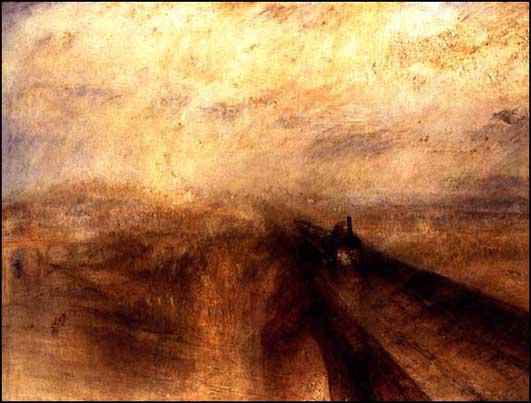J. M. W. Turner

Joseph Mallord William Turner, the son of a barber and wigmaker, was born in London in 1775. As a child Turner made money by colouring engravings for his father's customers. At the age of 14 he entered the Royal Academy. He exhibited his first drawing, A View of the Archbishop's Palace in Lambeth in 1790. Two years later he providing illustrations for the Copperplate Magazine and the Pocket Magazine.
In 1792 Turner went on his first sketching tour. Most of his pictures during this period were cathedrals, abbeys, bridges and towns but in 1796 he became interested in painting pictures of the sea. He also began touring with his artist friend, Thomas Girton.
By 1800 Turner was acknowledged as one of Britain's leading topographical watercolourist. He received several commissions to illustrate books. His artistic ability was recognised when he was elected an associate of the Royal Academy.
In 1803 Turner's style changed. His impressionistic Calais Pier was criticised as being unfinished. For the next few years he was attacked by the critics and he had difficulty selling his paintings. One critic called Turner's landscapes "pictures of nothing, and very alike." Turner had his supporters, including John Ruskin, who described his paintings as "true, beautiful and intellectual".
In 1844 Turner turned his attention to railways and painted Rain, Steam and Speed - The Great Western Railway. J. M. W. Turner died at his cottage in Chelsea in 1851. He left some three hundred paintings and nineteen thousand watercolours to the nation.

